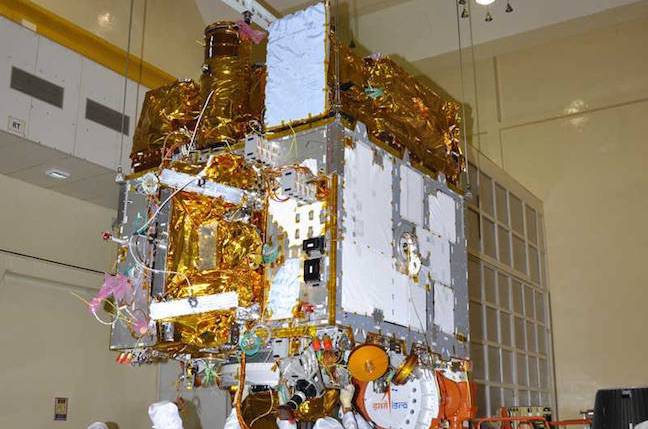The Indian Space Research Organisation (ISRO) states that it’s ready to launch ASTROSAT, it’s first attempt at studying distant celestial objects like stars, galaxies, wormhole and the likes, by October this year. Tests are underway for the Hubble-like ASTROSAT, which houses four X-ray instruments, an ultraviolet telescope and a charge particle monitor, and weighs 1650 kg. It shall orbit the Earth for five years at 650-km speed equatorially.

The observatory was built by ISAC (ISRO Satellite Centre) and once launched, India will be registered in the list of space-reigning countries like US, Europe, Russia and Japan, withs its independent space exploratory mission providing data to its astronomy committee for the coming five years.
ISRO confirmed that the assembly was completed and switched on, and all payloads and sub-systems were installed. They even stated that the mechanical fit checks of the satellite with PSLV payload adaptor were successfully performed.
ASTROSAT will be first of its kind with the functionality to scan the sky in variable frequencies – from ultraviolet to optical and low to high energy X-ray bands. This is significant as it’s ISRO’s first attempt at an observatory.
Since the mission is to be launched on ISRO’s PSLV C-34, and has to be tested for electromagnetic interference, electromagnetic compatibility, thermal vacuum, vibration and acoustics, among others. ISRO assured that the spacecraft parameters are normal and everything’s functioning as it should. Once the testing is successfully completed, the observatory shall be transported to the Satish Dhawan Space Centre in Sriharikota, Andhra Pradesh for its launch in October.
The Indian Space Research Organisation (ISRO) states that it’s ready to launch ASTROSAT, it’s first attempt at studying distant celestial objects like stars, galaxies, wormhole and the likes, by October this year. Tests are underway for the Hubble-like ASTROSAT, which houses four X-ray instruments, an ultraviolet telescope and a charge particle monitor, and weighs 1650 kg. It shall orbit the Earth for five years at 650-km speed equatorially.
The observatory was built by ISAC (ISRO Satellite Centre) and once launched, India will be registered in the list of space-reigning countries like US, Europe, Russia and Japan, withs its independent space exploratory mission providing data to its astronomy committee for the coming five years.
ISRO confirmed that the assembly was completed and switched on, and all payloads and sub-systems were installed. They even stated that the mechanical fit checks of the satellite with PSLV payload adaptor were successfully performed.
ASTROSAT will be first of its kind with the functionality to scan the sky in variable frequencies – from ultraviolet to optical and low to high energy X-ray bands. This is significant as it’s ISRO’s first attempt at an observatory.
Since the mission is to be launched on ISRO’s PSLV C-34, and has to be tested for electromagnetic interference, electromagnetic compatibility, thermal vacuum, vibration and acoustics, among others. ISRO assured that the spacecraft parameters are normal and everything’s functioning as it should. Once the testing is successfully completed, the observatory shall be transported to the Satish Dhawan Space Centre in Sriharikota, Andhra Pradesh for its launch in October.